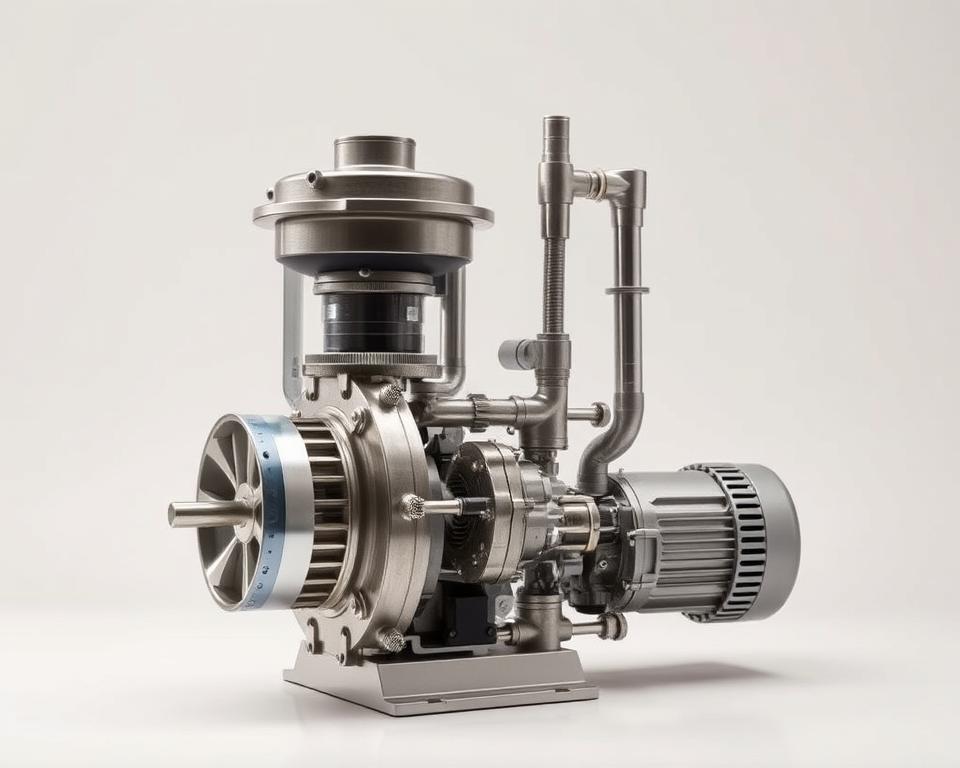RV Waste Pump Guide: Effective Waste Removal Methods
Have you given thought to how key streamlined waste removal is while camping in your camper? Numerous RVers see dumping chores spoil their vibe. The need to locate a suitable dumping station and the complexities of wastewater handling can interfere with your RV journey. Yet, a stalwart RV waste pump provides the efficiency you need for hassle-free dumping. This guide highlights the necessity of RV sewage pumps in revolutionizing waste handling. It delivers cleanliness, upgrading your RV journey.
Critical Findings
- Effective waste management is essential for RV owners.
- Reliable RV waste pumps can improve sewage removal.
- On-the-go pump systems enhance convenience during RV adventures.
- Grasping wastewater tank care is important for RV sanitation.
- Effective removal strategies enhance overall camping experiences.
Getting to Know RV Waste Systems
Preserving cleanliness and comfort on the road requires effective sewage handling. A good setup includes a black water tank for toilet waste. It also comprises additional hygiene modules. Being aware of system mechanics is key for proper and efficient waste disposal.
The waste from RVs differs from what we find at home. This fact emphasizes the need of dedicated sewage handling. Trippers need to learn on maintaining their black water tank. Such effort wards off odors and clogs, which can impede your trip.
Locating dump sites is important, especially in isolated campsites. While many campgrounds provide proper facilities, they may be lacking. Thus, preparing in advance is beneficial. This foresight can greatly enhance your camping experience.
Ultimately, managing RV waste effectively demands knowing your RV’s waste system and planning for sanitation. Being educated guarantees a smoother trip in your RV.
What is an RV Waste Pump?
An RV waste pump is essential for removing waste from campers. The camper grinder unit chops solid waste into fine mixture. This lets easy pumping through a flexible tube to a disposal site. It’s especially advantageous when gravity-fed systems fail.
Traditional sewage pumps and grinder units vary in mechanism. Macerator pumps shred waste, providing added ease. This makes disposal easier in difficult locations.
Every RVer ought to learn how an RV waste pump behaves. Using a grinder unit enhances pumping, also facilitates removal in remote areas. Proper use maintains system performance, boosting your RV adventures.
Operating Principle of RV Grinder Pumps
An RV macerator pump utilizes premium cutting elements that shred waste into a thin fluid mixture, similar to a kitchen garbage disposal. This capability is critical for waste management in RVs. By liquefying waste, the pump allows sewage to be sent across greater lengths. It also helps in pushing waste uphill, warding off clog risks.
Each time the toilet is flushed, the pump’s cutter system are switched on. This automatic activation ensures a clean handling process. It simplifies the disposal process, especially when connecting to sewage lines. Thus, RV owners are guaranteed of a dependable disposal network.

Why You Need a Macerator Pump
An RV waste pump brings major improvements in efficient waste disposal, upgrading waste management for RV enthusiasts. A major perk is the enhancement of sanitary conditions. This device optimizes disposal, substantially minimizing contamination risks.
Having a macerator pump means handling disposal easily, even in isolated camps. This gets rid of the need for traditional, bulky disposal methods. The convenience it offers provides peace of mind while traveling. It grants easy access to sewer connections or portable dump stations, at campsites or en route.
Moreover, these pumps are engineered for odor control. Many come equipped with features aimed at suppressing odors. This creates a cleaner environment inside your RV, making camping better.
Their compact size ensures they save valuable space, freeing room for gear. Opting for an RV waste pump is a smart choice for improving travel comfort.
Applications of an RV Waste Pump
Camper sewage grinders are not just for recreational vehicles. They are vital for effective disposal in various settings. This includes marine vessels, compact dwellings, and even project sites. They meet different requirements, adapting to uses and disposal requirements.
For those boondocking, RV waste pumps are revolutionary. They streamline remote emptying. Enthusiasts can then focus on nature, free from sanitation concerns. It’s a must-have tool for anyone passionate about RV camping.
In the micro-living scene, these pumps are transformers. Space is a luxury, and sanitation is key. RV waste pumps cover both, managing waste without using excessive space. They slot effortlessly into tiny footprints.
Construction sites see a lot of waste. RV waste pumps deliver aid to this challenge. They ensure order, and meet safety standards. Their ability to handle tough waste materials makes them indispensable for construction projects.
Their flexibility underscores their significance in effective waste management. They are key in multiple scenarios, from RVs and tiny homes to construction sites. Their dependability in improving sanitation is unsurpassed.
Choosing the Best RV Waste Pump for Your Needs
Picking the ideal macerator pump necessitates several key considerations. Analyzing the pump’s capacity, robustness, and fit for your RV’s size is essential. It’s critical to pick a pump that can support how often you’ll use it.
Crucial aspects to ponder are:
- Pump-out schedule: Evaluate how often you’ll need the pump to handle effluent adequately.
- Campground landscape: Consider the types of locations you’ll encounter. Some pumps handle slopes efficiently.
- Ease of installation: Opt for models that are simple to fit, so you can get up and running without delay.
- Fluid handling demands: Determine the type of waste and fluid you’ll be pumping to secure pump compatibility.
Spend time evaluating these factors carefully. This guarantees you make a sound decision. Selecting the ideal RV waste pump will greatly enhance your RV experience.
Leading Macerator Models
Picking a popular macerator can greatly upgrade your RV lifestyle. Leading models include the Dometic 310 Series. They come with features that cover multiple demands within the RV community.
The SeberFlo pump is praised for its quick operation and intuitive design. It boasts a high flow rate that quickly drains compartments. Its reliability and small size make it a go-to for those seeking efficiency.
The Flojet 18555-000A ranks highly among grinder units. It is built for range, tackling different waste disposal needs with ease. Its durable construction and accessible features make it indispensable for tough use and efficiency enthusiasts.
| Feature | SewerFlo Quick Release | Flojet 18555-000A |
|---|---|---|
| Capacity | 30 GPM | 13 GPM |
| Weight | 8 lbs | 6 lbs |
| Mobility | High | Medium |
| Durability | Moderate | High |
User feedback on these units underscore their key benefits that shape preferences. Ease of use and speed are key, informing users in their picks. Whether it’s the Flojet, recognizing their differences secures you find the ideal waste pump.
Pump Setup and Upkeep Advice
Correct installation of your RV waste pump is vital. It provides a leak-free link to the RV’s waste system, ensuring no leaks and maintaining top function. Start by selecting an optimal location near the waste tank. This shortens discharge tubing, improving flow. Mount it sturdily, adhering to the manufacturer’s guidelines for flawless operation.
To install your RV waste pump effectively, follow these steps:
- Gather all necessary tools and materials.
- Initially, turn off the RV’s power and empty the waste tank.
- Position the pump in an airy, service-friendly spot.
- Attach the discharge hose to the pump and route it to the dump site.
- Check seals before powering up the pump.
Effective upkeep significantly lengthens your pump’s lifespan. Here are critical care steps:
- Review for damage or wear each month.
- Employ recommended cleaning agents to stop clogs.
- Run the pump periodically when not in use to keep gaskets supple.
- Remove clutter near the unit.
Should you face problems like reduced flow, follow these diagnostics:
- Inspect the discharge hose for clogs.
- Verify pump has power and fittings are tight.
- Refer to the guidebook for troubleshooting.
Other Options for Camper Waste Management
RV owners need to manage waste efficiently for a smooth camping experience. Traditional dump stations are often out of reach in off-grid areas. Thus, considering other options is essential. A campground pump-out service allows campsite disposal, conserving effort.
Other options include dry toilets and carry-along tanks. Composting toilets require little moisture and produce fertilizer. Portable containers offer easy transport to disposal sites as needed.
Choosing appropriately depends on personal preference. By evaluating these alternatives, RVers can maintain hygiene while exploring.
Final Thoughts
Proper camper sewage handling is key for a tidy living space on the move. We’ve explored various waste pumps, their functions, and advantages. A quality pump revolutionizes travel by ensuring swift disposal.
Choosing a pump from All in Sanitation simplifies disposal and boosts enjoyment. With proper equipment, RVers can travel stress-free, free from waste concerns, creating a more enjoyable trip for all.
Maintaining cleanliness underscores the need for proper waste handling, improving travel experiences and ensuring a pleasant journey.
